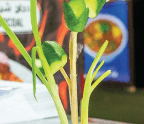Littoral Madness: On Kathy Acker
Chris Kraus remembers the late writer, in life and in death.

Kaucyila Brooke, Untitled #94 from Kathy Acker’s Clothes, 1998/2005, color photograph. From the cover of After Kathy Acker.
Like everything in the past, everyone remembers it differently, and some of the people involved hardly remember at all. We’re talking about something that happened more than seventeen years ago. But on January 23, 1998, which was a Friday, friends of the late writer Kathy Acker drove from San Francisco to Fort Funston, about twenty-five minutes away, to scatter her ashes. She’d died two months earlier at an alternative clinic in Tijuana, where she received palliative care for late-stage, metastasized cancer.
The ash scattering—like the wake at Bob Glück’s house on December 13 and the memorial reading at Slim’s Bar where Michelle Handelman was booed off the stage for no reason she can recall—devolved into a kind of black comedy, the way these things often do. I remember Cookie Mueller at Jackie Curtis’s memorial, standing up on the stage of La MaMa halfway through an evening of readings and monologues, blinking back tears as she faced the dark auditorium. She had no speech prepared. “I thought this was supposed to be a funeral,” she said to the room. “Not a variety show.” Speaking to Sylvère Lotringer, the artist Steve Brown recalled how the elegantly planned Nembutal suicide of Danceteria emcee Haoui Montaug among a small group of friends ended with a plastic bag over his head. He was a large man, in the late stages of AIDS, and whoever arranged for the pills had underestimated the dose. Before time accelerated, deaths among friends in the art world were like salt to a sting, bringing unresolved feuds to the surface. Now we care less, or are nicer.
Around this time last year, when I started working on what may or may not be a biography of Kathy Acker, I imagined beginning the book with the melee at Slim’s Bar, or at the wake, where a group of friends gathered to transfer her ashes from a box to an urn, or at the scattering. Tomagazine at the age of fourteen, a graduate student of Herbert Marcuse’s. She lied when it was clearly beneficial to her, and she lied even when it was not. Perceptive readers of Acker’s work have observed that the lies weren’t literal lies but more a system of magical thought. As Dodie Bellamy notes in her essay “Digging Through Kathy Acker’s Stuff, ” “Over and over, Acker tells the same tale: the mother is pregnant with the daughter, and the father leaves. The mother blames the daughter and tries to abort her. The daughter’s body survives, but not her unified self … Is it true? Does it matter? … Acker liberates libido from Freud’s repressed underworld.” But then again, didn’t she do what all writers must do? Create a position from which to write?
You’re reading a preview, subscribe to read more.
Start your free 30 days

